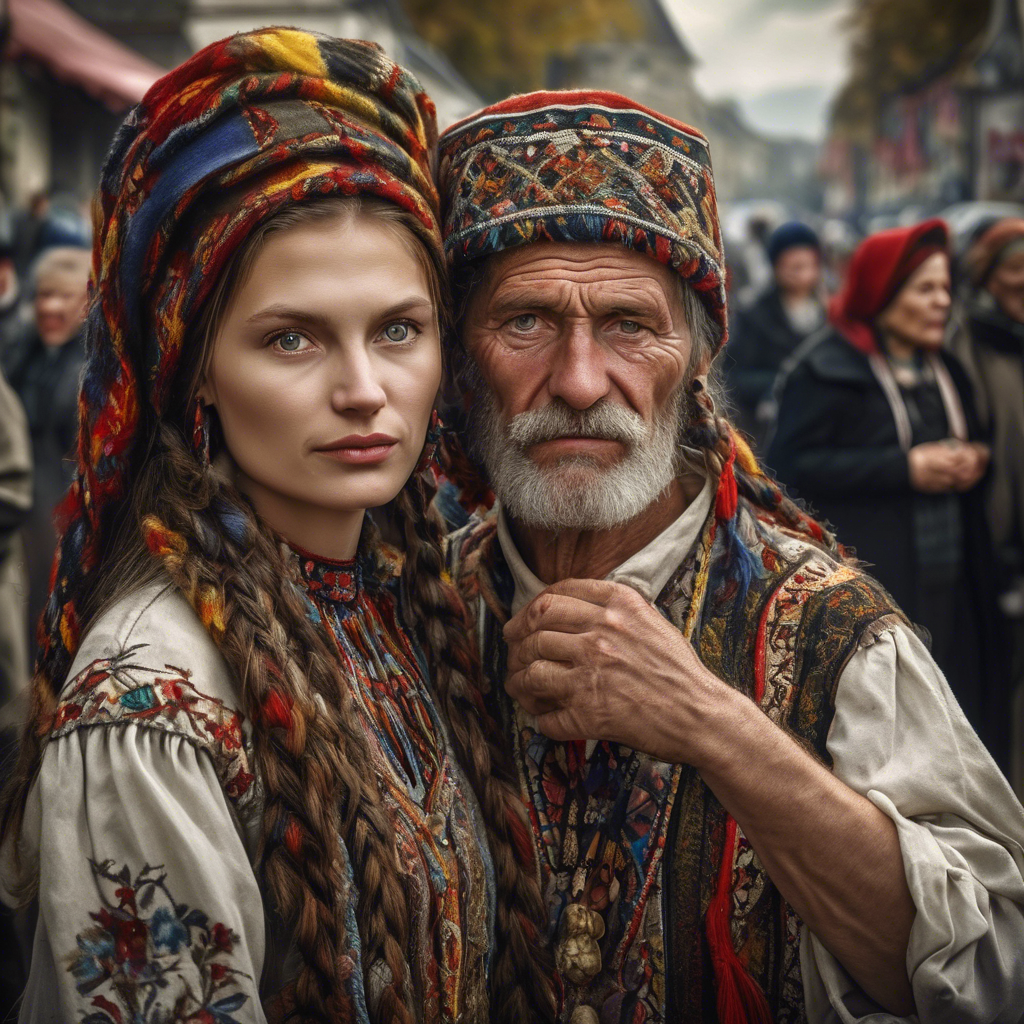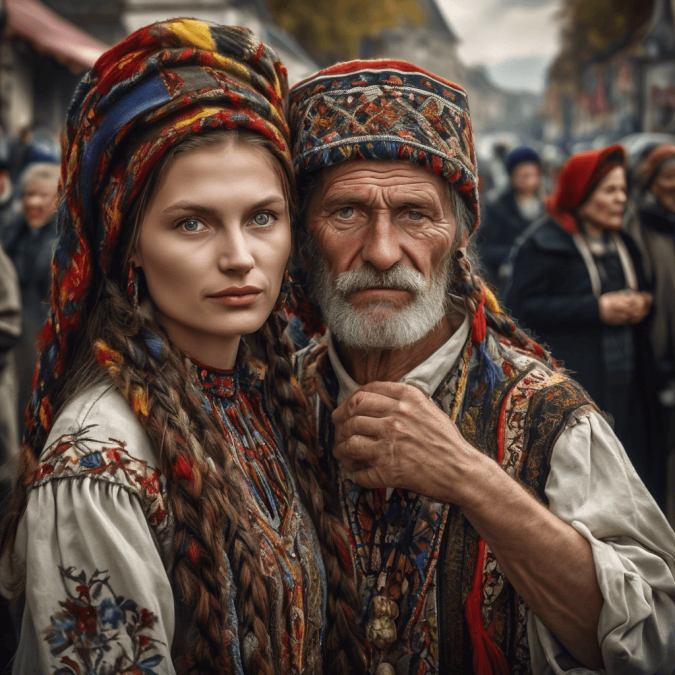
1. Introduction
Romania, situated at the crossroads of Eastern and Central Europe, boasts a rich and diverse history that spans millennia. Its geographical location, bordered by the Carpathian Mountains, the Black Sea, and various neighboring countries, has shaped its cultural identity and historical development. The purpose of this project is to delve into the multifaceted history of Romania, exploring its ancient origins, medieval kingdoms, modern unification, communist era, post-communist transition, cultural landmarks, and the challenges and developments of the 21st century.
Overview of Romania’s Geographical Location and Significance
Romania’s strategic location has made it a melting pot of cultures and influences throughout history. Bordered by Ukraine, Moldova, Hungary, Serbia, Bulgaria, and the Black Sea, Romania’s position at the crossroads of civilizations has contributed to its diverse heritage. The Carpathian Mountains running through the heart of the country have provided natural protection and resources, while the Danube River has served as a vital trade route.
2. Ancient History of Romania
Prehistoric Period and Early Civilizations
Romania’s prehistoric period dates back to ancient times when various tribes and cultures inhabited the region. The discovery of cave paintings in the Carpathian Mountains and archaeological sites such as the Cucuteni-Trypillian culture shed light on the early settlements in what is now Romania. These early civilizations laid the foundation for the rich cultural tapestry that would define Romania’s identity.
Dacian and Roman Influences
One of the most significant periods in Romania’s ancient history was the Dacian civilization, known for its fierce resistance against Roman conquest. The Dacian Wars led by King Decebalus culminated in the defeat of the Dacian kingdom by Emperor Trajan in 106 AD. The Roman occupation of Dacia brought about cultural exchange and infrastructure development, leaving a lasting impact on the region.
Migration of Various Tribes and Kingdoms
Following the decline of the Roman Empire, Romania witnessed the migration of various tribes and kingdoms, including the Visigoths, Huns, and Slavs. The establishment of the Gepid Kingdom, the Avar Khanate, and the First Bulgarian Empire in the region contributed to the cultural diversity of Romania. These migratory movements reshaped the political and social landscape of the territory.
3. Medieval Romania
Formation of Principalities and Kingdoms
The medieval period in Romania was marked by the formation of principalities and kingdoms that would play a crucial role in shaping the country’s future. The emergence of Wallachia, Moldavia, and Transylvania as independent entities laid the groundwork for the unification of Romania. Rulers such as Vlad the Impaler and Stephen the Great left a lasting legacy in Romanian history.
Golden Age of Moldavia and Wallachia
The Golden Age of Moldavia and Wallachia in the 14th and 15th centuries saw a flourishing of culture, art, and architecture in the region. The reigns of rulers like Stephen the Great of Moldavia and Vlad the Impaler of Wallachia brought about a period of stability and prosperity. Monasteries, fortresses, and palaces built during this time continue to stand as testaments to Romania’s medieval heritage.
Ottoman and Hungarian Influences
The Ottoman and Hungarian influences on medieval Romania were significant, shaping the political and cultural landscape of the region. The Ottoman Empire’s expansion into the Balkans brought about centuries of conflict and vassalage for Wallachia and Moldavia. Hungarian control over Transylvania and the interplay of competing powers in the region added complexity to Romania’s medieval history.
4. Modern Romania
Unification of Romania in the 19th Century
The 19th century marked a pivotal period in Romanian history with the unification of Wallachia and Moldavia in 1859 under Prince Alexandru Ioan Cuza. This union laid the foundation for the creation of modern Romania and set the stage for further territorial expansion and political reforms. The ideals of nationalism and independence drove the movement for Romanian unification.
Independence from the Ottoman Empire
Romania’s quest for independence culminated in the War of Independence against the Ottoman Empire in 1877-1878. With the support of Russia, Romania achieved full independence and territorial expansion, including the acquisition of Dobruja. The Treaty of Berlin in 1878 recognized Romania as an independent state, solidifying its position on the European map.
World War I and Treaty of Versailles
Romania’s involvement in World War I on the side of the Allies had far-reaching consequences for the country. The Great War saw Romania gain and lose territories, experience political turmoil, and undergo significant social and economic changes. The Treaty of Versailles in 1919 recognized Romania’s territorial gains but also imposed harsh conditions, leading to political instability and social unrest. The interwar period in Romania was marked by struggles for power, economic challenges, and growing tensions that would ultimately shape the country’s path in the 20th century.
5. Communist Romania
Rise of Communism and Rule of Nicolae Ceaușescu
The aftermath of World War II saw Romania fall under communist rule with the establishment of a Soviet-backed government led by the Romanian Communist Party. Nicolae Ceaușescu’s rise to power in the 1960s marked a period of authoritarian rule characterized by repression, censorship, and economic mismanagement. Ceaușescu’s regime sought to enforce strict control over all aspects of Romanian society, leading to widespread suffering and discontent among the population.
Impact of Communism on Society and Economy
The communist era in Romania had profound consequences for society and the economy. Collectivization of agriculture, industrialization, and state control of resources led to shortages, inefficiency, and social inequality. The regime’s policies of censorship, surveillance, and repression stifled dissent and freedom of expression, creating a climate of fear and mistrust among the population.
Revolution of 1989 and Fall of the Communist Regime
The Revolution of 1989 marked a turning point in Romanian history, as popular uprisings across the country led to the overthrow of Ceaușescu’s regime. The violent suppression of protests and the televised trial and execution of Ceaușescu and his wife shocked the world and signaled the end of communist rule in Romania. The revolution paved the way for a new era of democracy, freedom, and change in the country.
6. Post-Communist Romania
Transition to Democracy and Market Economy
The post-communist period in Romania was marked by a challenging transition to democracy and a market economy. The country faced political instability, economic hardships, and social upheaval as it sought to rebuild institutions, establish democratic norms, and integrate into the global economy. Reforms in governance, economic policy, and social welfare were implemented to address the legacies of communism and foster a new era of progress and development.
Joining the European Union and NATO
Romania’s aspirations for European integration culminated in its accession to the European Union in 2007. Membership in the EU brought new opportunities for trade, investment, and cooperation, while also requiring adherence to democratic values and standards. Romania’s entry into NATO in 2004 further solidified its role in Euro-Atlantic security and defense cooperation, enhancing its strategic position in the region.
Challenges and Developments in the 21st Century
In the 21st century, Romania continues to face various challenges and opportunities as it navigates the complexities of a rapidly changing world. Economic growth, social reforms, infrastructure development, and environmental sustainability are among the key priorities for the country. Addressing corruption, strengthening institutions, promoting social cohesion, and fostering innovation are essential for Romania’s continued progress and prosperity in the years ahead.
7. Cultural and Historical Landmarks
Important Historical Sites and Monuments in Romania
Romania’s cultural and historical heritage is reflected in its diverse array of landmarks and monuments. From medieval castles and fortresses to Orthodox churches and monasteries, Romania boasts a wealth of architectural treasures. The painted monasteries of Bucovina, the medieval citadel of Sibiu, and the Gothic masterpiece of Bran Castle are just a few examples of Romania’s rich cultural legacy.
Traditional Romanian Culture and Customs
Romania’s traditional culture is a vibrant tapestry of music, dance, folklore, and cuisine that reflects its diverse heritage. Traditional dances such as the hora, folk music played on instruments like the cimbalom, and elaborate costumes worn during festivals showcase Romania’s rich cultural traditions. Traditional dishes like sarmale (stuffed cabbage rolls) and mămăligă (polenta) are staples of Romanian cuisine, enjoyed by locals and visitors alike.
Influence of Neighboring Countries on Romanian Culture
Romania’s proximity to neighboring countries has had a significant impact on its culture and customs. Hungarian, German, Turkish, and Slavic influences can be seen in Romanian architecture, language, cuisine, and traditions. The multicultural heritage of Transylvania, the historic ties with Moldova and Ukraine, and the Black Sea influences from Bulgaria and Greece all contribute to the rich tapestry of Romanian culture.
8. Conclusion
Summary of Key Points in Romania’s History
The history of Romania is a complex tapestry of ancient civilizations, medieval kingdoms, modern unification, communist rule, post-communist transition, and cultural landmarks. From the Dacian Wars to the Revolution of 1989, Romania has undergone dramatic transformations that have shaped its identity and destiny. The country’s resilience, creativity, and spirit of independence have been hallmarks of its historical journey.
Reflection on the Significance of Romania’s Past in Shaping its Present and Future
Romania’s past is a testament to the enduring spirit of its people and the challenges they have overcome throughout history. The lessons learned from ancient civilizations, medieval kingdoms, communist rule, and post-communist transition have shaped Romania’s present reality and future aspirations. By honoring its cultural heritage, embracing its diversity, and fostering a spirit of unity and progress, Romania can continue to build a brighter future for generations to come.
9. References
– “A Concise History of Romania” by Keith Hitchins
– “Romania: An Illustrated History” by Nicolae Klepper
– “The Romanian Revolution of December 1989” by Peter Siani-Davies
– “Modern Romania: The End of Communism, the Failure of Democratic Reform, and the Theft of a Nation” by Tom Gallagher
In conclusion, the history of Romania is a testament to the resilience, creativity, and spirit of its people who have navigated through centuries of challenges and transformations. From its ancient origins to its modern aspirations, Romania’s historical journey reflects a tapestry of triumphs and tribulations that have shaped its identity and destiny. By embracing its cultural heritage, fostering unity and progress, and honoring the lessons of the past, Romania can continue to build a brighter future for generations to come.
